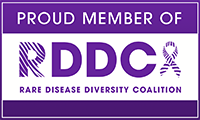![]()
Joint Pain & Scleroderma: Complications and Treatments
Scleroderma and Joints
Scleroderma can affect tendons, joints, nerves, and other structures that affect mobility. The increased production of collagen associated with scleroderma can cause vascular dysfunction. This can contribute to stiffness, warmth, tenderness, and pain in the joints and muscles.
Scleroderma-related joint pain can also manifest itself as hand stiffness caused by inflammation or swelling due to edema.
Scleroderma and Joint Symptoms
Development of fibrotic tissue can affect movement. Additionally, scarring and thickening of the skin can cause painful contractures of the fingers, wrists, or other joints, causing them to become “stuck” in a flexed position.
Treatments for Joint Pain in Scleroderma
Aspirin or other nonsteroidal, anti-inflammatory prescriptions can help with scleroderma joint pain, muscle pain, and stiffness. Simple hand and face exercises may ease specific symptoms and gentle cardiovascular exercise that focuses on your entire body (walking, swimming, yoga) can also help with scleroderma-related joint pain.

